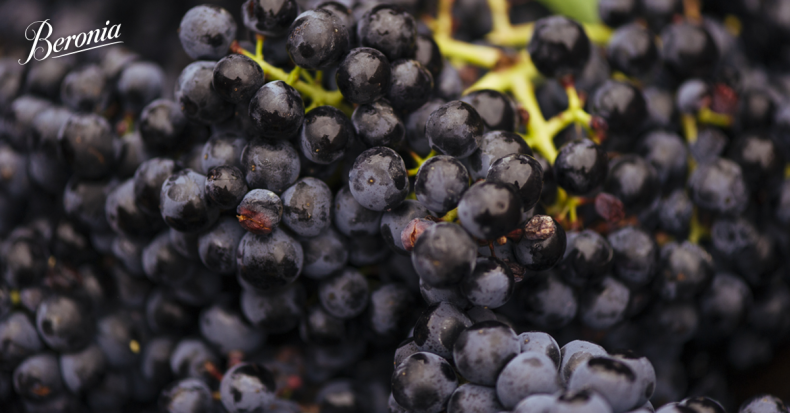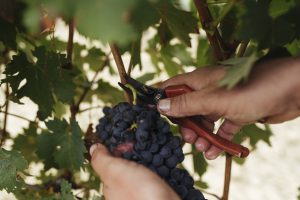Following the frosts that left us with a very short harvest in 2017, this year’s harvest has been generous, although it has also come with more than one challenge. The same rains that mean you will have no difficulty finding your favourite 2018 vintage Beronia, have also made more work for us in the vineyard.
Bering in mind that we finished harvesting on 27th October, it is still a bit soon to say with any accuracy what the wines made from the 2018 harvest will be like. What we are very clear about, though, is what the weather was like over the year. Before we talk about that, however, we would like to explain why vintages are important in the world of wine and ask “is it fair to talk about good and bad vintages? Should we only mention the good ones?”
The concept of vintages
The vintage is one of the most significant variables that determine what the content of the bottle is like. There are many others such as the soil, the grape variety, the type of container the wine is made and aged in, how long it is aged for… But, whilst many of these elements do not change or only change occasionally over time, the vast majority of producers would agree that no two harvests are the same. Just think, for one thing, that it never rains the same way or on the same dates.
The climate conditions determine how the vine’s growing cycle behaves, whether yields are greater or smaller and, most importantly, how the grapes ripen. These are external factors over which the producers have no control. What they can do is make decisions as to how to work with the vine, how to prune, whether to leave the bunches of grapes more or less exposed to the sun, whether to use techniques to limit yields and produce more concentrated flavours and decide when to pick the grapes.
There are vintages when the stars all seem to line up so that everything happens at the right time and in the right measure. But normally there is more than one problem to do battle with. The year’s weather will determine whether the wines are warmer or fresher in style (in Rioja people often talk about Mediterranean vs. Atlantic vintages), more or less structured and, as a result, what their potential for ageing is.
It is for this reason that, faced with the dichotomy between good and bad vintages, it is more interesting to think about the style of the harvest: are these lighter wines that can be drunk sooner and with lighter meals, or are they warmer, with more alcohol, maybe not suitable for keeping very long but sweetish and easy to drink? Another important question is: do we have the patience to wait for the prolonged ageing that great vintages require to reach their full potential to be completed?
The 2018 harvest at Beronia Rioja
Rain was the major feature of the 2018 harvest in Rioja, and was responsible for our yields having been more generous. It also promoted a huge amount of vegetative growth though, as well as gterater pressure from diseases in the vineyard.
It all started with a cold winter in which it snowed, adding more water, then the spring was particularly rainy, with almost twice as much water being collected than in a normal year. The most immediate consequences were delayed budburst and an increased risk of diseases in the vineyard.
Rain also made an appearance during the summer, and in its worst form, hail, which caused damage in quite a few vineyards in Rioja Alavesa. Agosto, thankfully, treated us to sun and heat that set off the ripening process. September was dry and slightly cooler than usual. On the one hand that was a positive as it ensured that the grapes ripened more slowly, developing more balance and better quality, but on the other, did not make up for the delay in the growing cycle.
The harvest started on 21st September with the garnacha and tempranillo grapes. The longer growing cycle varieties -graciano and mazuelo – were left on the vine to be picked later. We picked the White grapes next, whilst the vineyards in Rioja Alta, where the grapes ripen later, were harvested between 8th and 27th October. It would have been impossible to carry on picking any longer as the temperature dropped suddenly and it started raining, and even snowing at higher altitudes.
How would we assess the 2018 harvest? The increased yields mean we can adjust stocks and be confident looking forward. In terms of style, this will be a vintage with freshness. Moderate alcohol levels and plentiful production mean that the more basic wines will be quite drinkable from the moment they are released. Good practice in the vineyard (directed this year at removing excess growth) will also make it posible to make wiens woth good potential for ageing from grapes grown in vineyards where they have ripened slowly.
The 2018 harvest at Beronia Rueda
There are some parameters here that were the same as in Rioja, particularly the cold winter and cool, rainy spring. In Rueda, the rain fell mostly in the last few weeks of the season and continued through the first few weeks of summer, which also brought a few hailstorms. Budburst was delayed here too, coming a month later than in 2017, when the crop was ahead of itself.
The humidity also brought more pressure from diseases, especially mildew and oidium. August, which was very hot in the area around Rueda, helped make up a lot of the time lost, whilst the significant differences between daytime and night-time temperatures in the first few days of September put the finishing touches to the ripening process and helped make the grapes very healthy.
The harvest, which began on 11th September and went on until 3rd October, was beat all records in the Rueda D.O. in terms of volumes.





